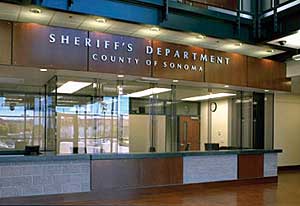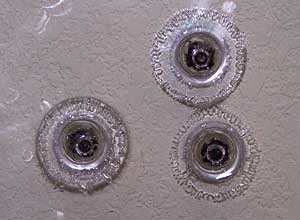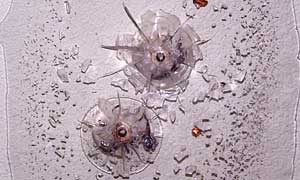Designing Bullet Resistant Protection Panel Systems: Capture More than the Imagination
Ballistic Resistance Design Meets Public Expectations for Practical Life Safety Issues
Good planning for a terrorist attack impacts the outcome of the damage to property and most importantly human life. The general public understands that while security can be improved in a public place, security measures are to be expected. Appropriate bullet resistant panels in areas with high threat potential has become a key element in designer's specifications for day-to-day operations in the public realm.
 |
| Sheriff Headquarters, County of Sonoma, CA,
Ross Drulis Cusenberry Architecture Photo credit: Sharon Risedorph Photography |
Architects, as a part of a security program for a building, help the owner identify and set goals of a cohesive security plan from the get go. Security might have been an employee as security guard and a few strategically located cameras. Today bullet resistant panels and modular systems are used to solve these adaptations, retrofitting security situations.
 |
| Manufacturers Polycarbonate bullet absorption test Photo credit: Bullet Guard |
The priority is safety and welfare of the general public. An owner can build to specifications that reduce shattering when building materials are impacted by an attack; glass blowing out, wall materials splintering or spalling and deflecting instead of diffusing ricocheting bullets. Focusing on proximity to human interface areas such as commercial building lobby's, airport terminals, train stations, parking security kiosks, information booths, financial institutions with teller areas, ATM's, and government buildings, architects create new designs, specifying bullet resistant panels for life saving safety.
Central command areas for security strategies create awareness of where to go in case of an attack to get accurate information. Designers typically specify ballistic protection panels in these "safe" areas. To achieve "safe" areas, prioritize open space with a hardened or strong perimeter, maintaining visual and equipment lines. Communication must occur both within the building with security and personnel and to entities outside of the building. A bullet resistant office within the building can be specified to meet this need, for example, with transparent ballistic panels specifications for visual access combined with opaque ballistic panels creating safety barriers. Attacks on a building's utilities or mechanical systems are other examples of safety threats where bullet resistant panels can make the difference to the building function.
 |
| Ricochet Glass Product, all laminated test samole; glass deflecting bullets Photo credit: Bullet Guard |









